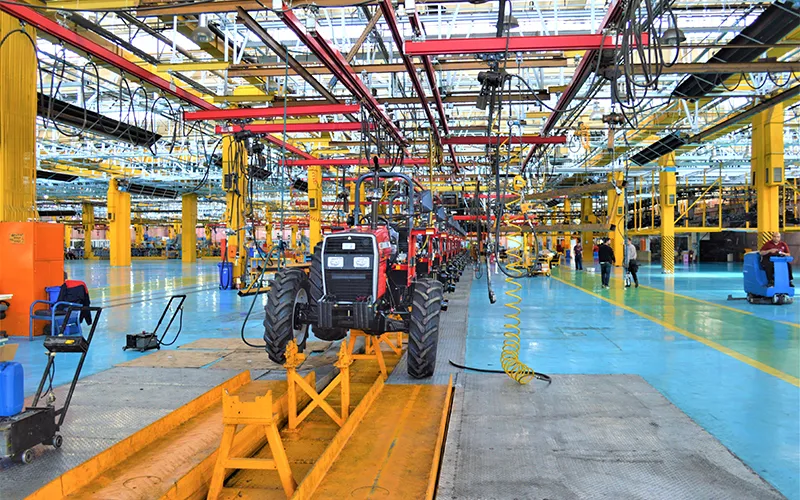Will the pandemic speed up workplace automation?
The threat of automation taking away jobs due to new and emerging technologies has faded from public discussion lately, but Covid-19 might be speeding up the process in an ‘organic way.’
Take the example of small robots and drones that are now deployed in Covid-19 infected areas to check if residents are maintaining social distancing. This is a job that would be done typically by the police force or security services. In warehouses, robots are deployed in greater numbers than before. In the months ahead as countries re-open, we are likely to see more of these changes due to Covid-19. This is happening to adhere to the public health guidelines on social distancing.
| Covid-19 could hasten the move toward automation in some sectors. Photo: Amin Khorsand |
Even before Covid-19, automation was taking place across Asia and the Pacific, particularly in capital intensive manufacturing sector where labor costs are much higher. In 2018, the report Asian Development Outlook (ADO): How Technology Affects Jobs showed that technology was impacting routine jobs. The pandemic is likely to hasten some of these trends.
The experience of living through the pandemic could provide impetus to automate jobs in sectors even where the labor cost is not as high due to changing preferences. But, it will depend on how the cost of doing business will change after Covid-19.
Whether or not a business will automate depends on the economic feasibility of such measures. Just because it is technically feasible to automate a set of tasks done at work, it doesn’t necessarily lead to automation. Businesses will weigh labor and other costs associated with hiring workers against the cost of acquiring and maintaining new machinery or an artificial intelligence-enabled service delivery system.
Whether automation is driven by the pandemic or by increasing labor costs, evidence shows that once businesses replace humans with robots it is unlikely they will go back to hiring a worker for that role. Industrial robots, which are increasingly more sophisticated, are difficult to create and integrate into businesses. Once adopted, they are cheaper than human workers to maintain and operate.
It will take time for businesses to adjust to the new reality. In advanced countries, where lockdown measures have been eased, governments have put in place new restrictions and measures to be followed by businesses as they re-open. These will add to the cost of doing business but are also essential to maintain public health and safety. Interestingly, this has also created new work opportunities for people in public health and logistical services.
Some jobs will disappear forever and others will emerge due to these changes. For example, if people’s preference for buying goods online increases, then we might not need as many workers working on shop floors in the big malls. Many large retailers are already using self-check-out lines in their stores, which has increasingly been adopted due to Covid-19. Many of these retail jobs will not come back.
The retail sector accounts for large shares of employment across developing countries in Asia. In the Philippines it accounts for 16.5% of total employment. In India, Indonesia, Thailand and Vietnam, it accounts for 8.0%, 15.9%, 11.4% and 9.1% respectively.
The impact of digitization on actual employment levels will depend on consumer preferences for the digital shopping experience. Surveys show that Asian consumers are more than twice as likely (19%) as the global average (8%) to shop via a smart phone, according to research by KPMG. Early evidence shows that Asia’s retail sector is ripe for a digital transformation.
We can expect the demand for highly skilled workers - those who perform mostly nonroutine cognitive tasks at work - to increase steadily in the coming decade. The education sector thus faces the dual challenge of helping countries embrace technologies of the Fourth Industrial Revolution while addressing fundamental educational needs to ensure no one is left behind.
New technologies are to be welcomed, as technological change is the ultimate driver of economic growth and better standards of living. However, advances in robotics and computing power are enabling a higher degree of automation than ever before. With new restrictions on social gathering, the push for automation has gotten stronger. Although this poses some challenges for job creation, we should not be pessimistic. New and better jobs will also be created.
Governments have an important role to play in preparing the workforce by aligning education and training with the changing labor demand. Covid-19 is likely to cause the first increase in global poverty since 1998, so it is important for social protection systems to be strengthened to avoid reversing significant gains in poverty reduction.
Automation is not a new phenomenon. In fact through history, much technological change has involved the replacement of human labor with machines of some sort. Covid-19 will certainly hasten the process in some sectors but less so in others. The key is to prepare for the inevitable change with the right set of policy interventions.
Sameer Khatiwada is Technology and Innovation Specialist, Southeast Asia Department, ADB.











